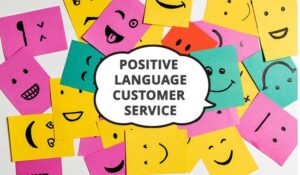Steve Nattress at Enghouse Interactive describes what natural language understanding is and explains why it is important to customer service.
Artificial intelligence is an increasing part of business operations, including within the contact centre, where it can be used to power intelligent chatbots or automate existing processes (such as call wrap-ups) to increase efficiency.
However, AI is a wide field with multiple techniques and technologies within it – this blog will explore how Natural Language Processing (NLP) and Natural Language Understanding (NLU) in particular delivers benefits within customer service.
Defining Natural Language Processing
Essentially, Natural Language Processing is a subfield of AI and linguistics concerned with how computers process human language. It covers areas such as:
- Sentiment analysis (how is the speaker/writer feeling – positive, negative, neutral?)
- Emotion detection (are they happy/angry?)
- Theme detection (what is the conversation specifically about?)
- Intent (why is the customer contacting the business?)
Linguistics (or rule-based techniques) consists in creating a set of rules and grammars that identify and understand phrases and relationships among words. These are developed by linguistic experts and are then deployed on the NLP platform.
The Difference Between AI and NLP
People may be familiar with the AI technique of machine learning (ML). Some consider NLP to be part of ML, others the opposite. The truth is that both NLP and machine learning are fields of computer science that aim to deal with human language.
In fact, within the same NLP platform, you can use linguistic and machine learning techniques to extract insights from voice and text conversations.
Rather than following rules set by linguists, in ML the machine will learn patterns without being explicitly programmed. This experience gathered during a training phase is then used by the machine learning algorithm to create the rules it works to. This ensures a more scalable system that does not rely on a particular domain expertise.
NLP in Action
Take this example. “The branch staff were very helpful but the interest rates on your loans are too high, so I will go elsewhere.”
This is a complex sentence with positive and negative comments, along with a churn risk. Using NLP enables you to go beyond the positives/negatives. To understand in detail what the positive actually is (helpful staff) and that the negative was that loan rates were too high.
Both of these precise insights can be used to take meaningful action. Rather than being able to say “X% of customers were positive or Y% were negative.”
If, instead of NLP, the tool you use is based on a “bag of words” or a simplistic sentence-level scoring approach, you will, at best, detect one positive item and one negative as well as the churn risk.
The issue is that, when it comes to a root-cause analysis, your tool’s insight will give the cause of churn as “staff experience and interest rates”. That’s why accuracy matters. You need a high level of precision and a tool with the ability to separate and individually analyse each unique aspect of the sentence.
Natural Language Processing has two main subsets – NLU and Natural Language Generation (NLG). As the names suggest NLU focuses on understanding human language at scale, while NLG generates text based on the language it processes.
This could mean reading a range of documents and creating a summary of them that is intelligible and useful to humans.
Natural Language in Customer Service
Currently Natural Language Understanding is much further advanced than NLG in terms of use cases in the customer service field. For this reason, we will focus on the benefits it brings to the contact centre in four key areas.
1. Voice of the Customer
Most organisations regularly collect feedback from their customers, either through scheduled surveys or at the end of an interaction. However, by their nature these give an incomplete picture. The people that tend to fill in questionnaires are normally either very happy or very upset by the service they receive.
Response rates can be low and overall results often only give a satisfaction metric, such as Net Promoter Score, rather than actionable insights.
By using NLU instead to analyse all conversations between the customer and the organisation you get a much more complete view.
Messages on both digital channels (email, social media, chat) and on the phone (through voice to text transcription), can be automatically analysed for deeper insights and the results shared with relevant teams.
This enables improvements to be made to the customer experience that can increase satisfaction, reduce churn and enhance efficiency.
2. Voice of the Agent
Companies strive to deliver a consistent, high quality experience for every interaction. In practice, quality management currently involves managers manually checking interactions. Either by listening to recordings of them in the case of calls or reading digital conversations.
They then use this to identify agent strengths and weaknesses, script adherence, and areas for training or coaching.
However, this is incredibly time-consuming – meaning that at best supervisors can probably only evaluate 5% of interactions. So 95% of opportunities for improvement are missed – impacting the wider customer experience.
This is where NLP can transform the process. It can analyse 100% of interactions, across every channel and score them quickly, objectively and consistently.
After this evaluation any that are deemed high risk are automatically flagged to the supervisor. They can then follow up with the individual agent to provide relevant coaching.
3. Automatic Interaction Routing
Customers want their call or interaction to be dealt with first time by the most appropriate and skilled agent. So if they are getting in contact with their insurer about making a claim on their car insurance, they don’t want to speak to a general advisor that then has to transfer them to a colleague.
The same point applies to digital transactions. They should automatically go to the best available agent to deliver an informed response.
NLP works across both digital and telephone channels to ensure that interactions are routed to the right agent, first time. Rather that using a traditional IVR, customers can simply say what they are calling about and it will analyse their speech and connect them to an expert.
For digital interactions it scans emails, chats or social media messages and sends it to the most appropriate advisor. Furthermore, potentially the message can be accompanied by a relevant template that can form the basis of the answer.
Customer frustrations are therefore reduced as they get to speak to the right person, first time.
4. Automating Call Categorisation
At the end of every interaction advisors categorise it by subject, such as a call about delivery or product query. This enables companies to measure the topics that are driving the greatest volume of interactions.
They can then use this information to drive changes or improvements. However, manual categorisation can lead to discrepancies. For example, when individual advisors report the subject of an interaction differently – while interactions can clearly cover multiple topics.
Using Natural Language Understanding to automatically categorise interactions has multiple benefits. Greater consistency, a deeper insight into what customers are asking about and improved efficiency as it removes administration.
As NLG technologies improve, basic categorisation could evolve into summarising the entire call and adding it to the customer’s record. Moreover, this would give a more detailed picture of their wants and needs.
Natural Language Processing offers multiple benefits to customer service across the interaction lifecycle. From routing the call, then understanding the conversation from the agent and customer point of view, to categorising and analysing it once it is completed.
All of this helps increase customer satisfaction and efficiency, delivering competitive advantage across the contact centre.
This blog post has been re-published by kind permission of Enghouse Interactive – View the Original Article
For more information about Enghouse Interactive - visit the Enghouse Interactive Website
Call Centre Helper is not responsible for the content of these guest blog posts. The opinions expressed in this article are those of the author, and do not necessarily reflect those of Call Centre Helper.
Author: Enghouse Interactive
Published On: 28th Mar 2022 - Last modified: 29th Mar 2022
Read more about - Guest Blogs, Enghouse Interactive






 Enghouse Interactive delivers technology and expertise to help bring your customers closer to your business through its wide range of customer contact solutions.
Enghouse Interactive delivers technology and expertise to help bring your customers closer to your business through its wide range of customer contact solutions. 








